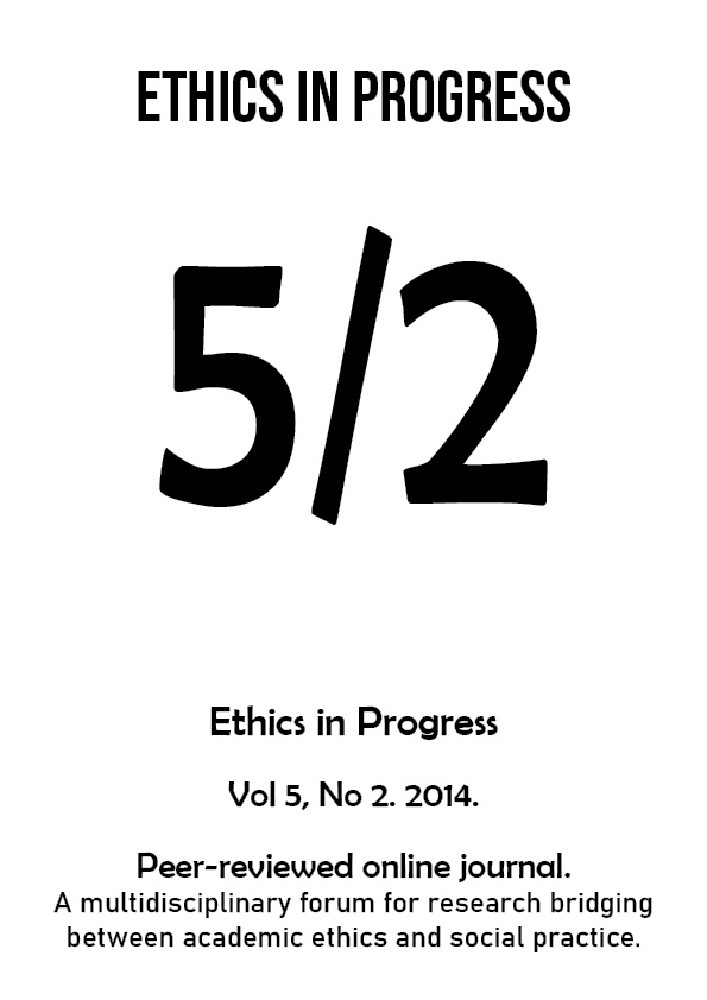Abstract
This paper explores the misrecognition of women's experience with violence in order to understand better what kinds of approaches to the problem would make it possible to design successful strategies for the prevention of violence. Violence itself, as well as common misconceptions regarding its mechanisms, carries ramifications that go far beyond direct and physical injury. The prevalence of violence and lack of social awareness regarding its mechanisms result in limitations to the social participation of many individuals and groups. Among the groups affected, women have an important place, both due to their number and the way that femininity relates to and disturbs other identities.
References
Bartlett, K. T. 1990. “Feminist Legal Method.“ Harvard Law Review 103 (4): 829-888.
Branch, C. 2014. “How Some States Treat Battered Victims As Criminals.”, http://www.huffingtonpost.com/2014/11/17/tondalo-hallultraviolet_n_6174076.html.
Belknap, J. &Melton, H. 2005. Are Heterosexual Men Also Victims of Intimate Partner Abuse?. National Electronic Network on Violence Against Women. Available from: http://www.vawnet.org/Assoc_Files_VAWnet/AR_MaleVictims.pdf.
Bernardes, M. N. 2014. “Domestic Violence and Gender Oppression: An Analysis of Brazilian Law in Light of a Theory of Democratic Justice.“ InZirk-Sadowski, M., Wojciechowski, B., & Cern, K. M. (Eds.), Legal and Communication Strategies Towards the Recognition of Minority Groups.Dorchester: Ashgate: 113-127.
Bindel, J. 2015. “Beating Our Partner Is a Crime, Not an Illness.“ Available from: http://www.theguardian.com/commentisfree/2015/jan/12/beatingyour-partner-crime-not-illness-domestic-violence.
Butler, J. 2003. Precarious Life, the Power of Mourning and Violence. London: Verso.
Davies, M. 2002. “Male Sexual Assault Victims: A Selective Review of the Literature and Implications for Support Services.“ Aggression and Violent Behavior 7 (3): 203–214.
DeKeseredy, W. & Schwartz, M. 1998. Measuring the Extent of Woman Abuse in Intimate Heterosexual Relationships: A Critique of the Conflict Tactics Scales. Available from: http://www.vawnet.org/applied-researchpapers/print-document.php?doc_id=388.
Dobash, R. P. & Dobash, R. E. 2004. “Women’s Violence to Men in Intimate Relationships Working on a Puzzle.“ British Journal of Criminology 44: 324–349.
Dutka, J. 2014. “Przemoc wobec kobiet i kobieca agresja w kontekście ról płciowych i mylnego uznania (misrecognition).“ Filozofia Publiczna i Edukacja Demokratyczna, 2(2014).
Dworkin, A. 1989. Pornography: Men Possessing Women. New York: Penguin Books USA Inc.
Fraser, N. 1997. “After Family Wage. A Postindustrial Thought Experiment.“ In
Fraser, N. Justice Interruptus: Critical Reflections on the Postsocialist Condition. New York: Routledge: 41-66.
Fraser, N. 1996. “Social Justice in the Age of Identity Politics: Redistribution, Recognition and Participation.” In Peterson, G. B. (Ed.), The Tanner Lectures on Human Values, 19. Salt Lake City: University of Utah Press.
Fraser, N. & Honneth, A. 2003. Redistribution or Recognition? A PoliticalPhilosophical Exchange. London: Verso.
Frohmann, L. 1991. “Discrediting Victims Allegations of Sexual Assault: Prosecutorial Accounts of Case Rejections.“ Social Problems 38 (2): 213-216.
Goff, P. A., Thomas, M. A., & Jackson, M. C. 2008. “Ain’t I a Woman?: Towards an Intersectional Approach to Person Perception and Group-basedHarms.“ Sex Roles 59: 392–403.
Hooks, B. 2000. Feminist Theory: From Margin to Center. London: Pluto Press.
Kelly, L. & Westmarland, N. 2015. Domestic Violence Perpetrator Programmes Steps to Change Executive Summary. Available from:http://respect.uk.net/wp-content/uploads/2015/01/Project-Mirabalexecutive-summary-EMBARGO-00.01-MONDAY-12-JANUARY-2015.pdf.
Koons-Witt, B. A. 2002. “The Effect of Gender on the Decision to Incarcerate Before and After the Introduction of Sentencing Guidelines.“Criminology 40 (2): 297-327.
Law, V. 2014. “Trapped In The Dark: Marissa Alexander and How Our Twisted Legal System Re-Victimizes Domestic Violence Survivors.” Available from: http://Www.Salon.Com/2014/05/16/Trapped_In_The_Dark_Marissa_Alexander_And_How_Our_Twisted_Legal_System_Re_Victimizes_Domestic_Violence_Survivors/.
Levin, V. 2011. “Alternative Sentences Sought for Domestic Violence Victims.”Available from: http://www.legislativegazette.com/articles-c-2011-06-13-78275.113122-alternative-sentences-sought-for-domesticviolence-victims.html.
Luci, P. & Beanneninger, M.A. 1991. “Aggression by Women: Mores, Myths, and Methods.“ In Beanneninger, R. (Ed.), Targets of Violence and Aggression. Amsterdam: North Holland.
Madris, E. I. 1997. “Images of Criminals and Victims: A Study on Women's Fear and Social Control.“ Gender and Society 11 (3): 342-356.
Mcdonough, K. 2015. “This Is By No Means a Conclusion: Marissa Alexander Is Released, but Her Struggle for Justice Continues.“ Available from: Http://Www.Salon.Com/2015/01/28/This_Is_By_No_Means_A_Conclusion_Marissa_Alexander_Is_Released_But_Her_Struggle_For_Justice_Continues/.
McNay, L. 2010. “Feminism and Post-Identity Politics: The Problem of Agency.“ Constellations 17 (4): 512-525.
Murphy, T.W. 1996. “A Matter of Force, Redefinition of Rape“. Available from: http://www.d.umn.edu/cla/faculty/jhamlin/3925/Readings/Force.html.
Nowak, E. & Cern, K. M. 2008. Ethos w życiu publicznym. Warszawa: PWN.
Nowak, E. 2013. Experimental Ethics. A Multidisciplinary Approach. Münster: LIT.
Nowak, E., Schrader, D., & Zizek, B. (Eds.) (2013). Educating Competencies for Democracy. Bern – New York – Berlin: Peter Lang Publishing.
Peck, A. 2013. “Victim's House Burned Down After She Accuses Football Star of Rape.” Available from: http://thinkprogress.org/health/2013/10/14/2777431/maryvillemissouri-rape/.
Rich, J. 2014. “Saving Muslim Women: Feminism, U.S. Policy and the War on Terror.“ Available from: https://www.usfca.edu/International_Studies/international_affairs_review/fall2014/articles/Saving_Muslim_Women/.
Rosin, H. 2014. “When Men Are Raped.“ Available from: http://www.slate.com/articles/double_x/doublex/2014/04/male_rape_in_america_a_new_study_reveals_that_men_are_sexually_assaulted.html.
Schrader, D. E. 1999. “Justice and Caring: Process in Collage Students' Moral Reasoning Development.“ In Katz, M., Noddings, S. N., & Strike, K. A (Eds.), Justice and Caring: The Search for Common Ground in Education. New York: Teachers College Press.
Schrader, D. E. 2003. “Moral Metacognition in Adolescence and Adulthood.“ In Demick, J. & Andreoletti, C. (Eds.), Handbook of Adult Development. New York: Kluwer Academic/Plenum: 301–327.
Simpson, M. 2014. “Standing Our Ground: Reproductive Justice for Marissa Alexander.“ Available from: realitycheck.org/article/2014/04/18/standing-ground-reproductivejustice-marissa-alexander/.
Stotzer, R. L. 2009. “Violence Against Transgender People: A Review of United States Data.“ Aggression and Violent Behavior 14: 170–179.
Wiener, M. J. 2004. Men of Blood Violence, Manliness and Criminal Justice in Victorian England. Cambridge: Cambridge University Press.
Young, I. M. 1997. “Feminism And The Public Sphere Asymmetrical Reciprocity: On Moral Respect, Wonder, and Enlarged Thought.“Constellations 3 (3): 340-363.
Young, I. M. 2005. On Female Body Experience “Throwing Like a Girl” and Other Essays. New York: Oxford University Press.




